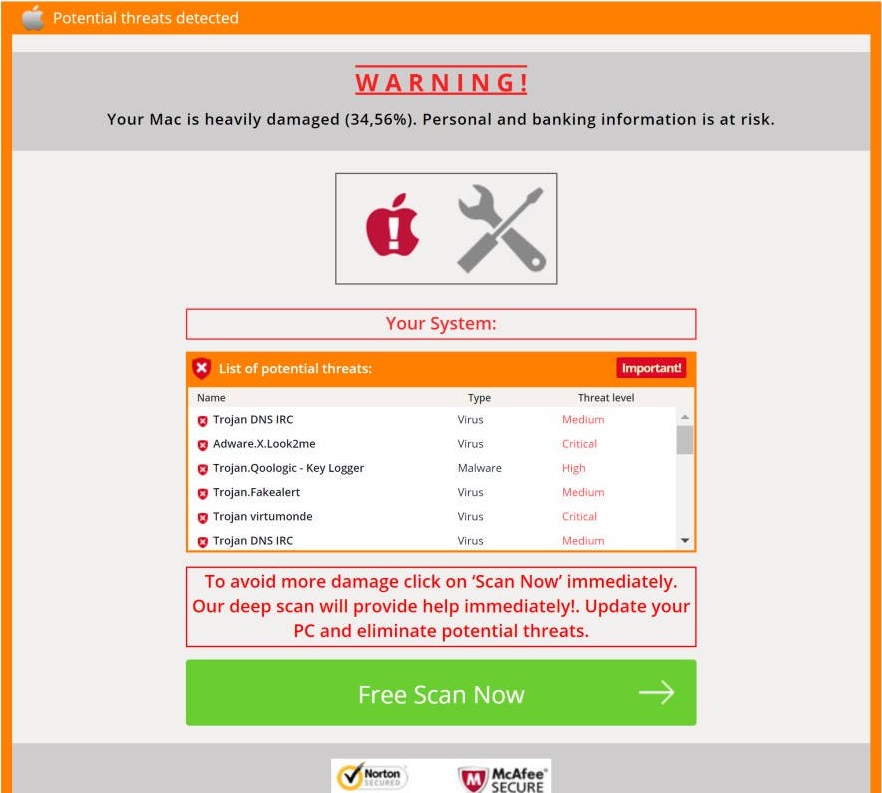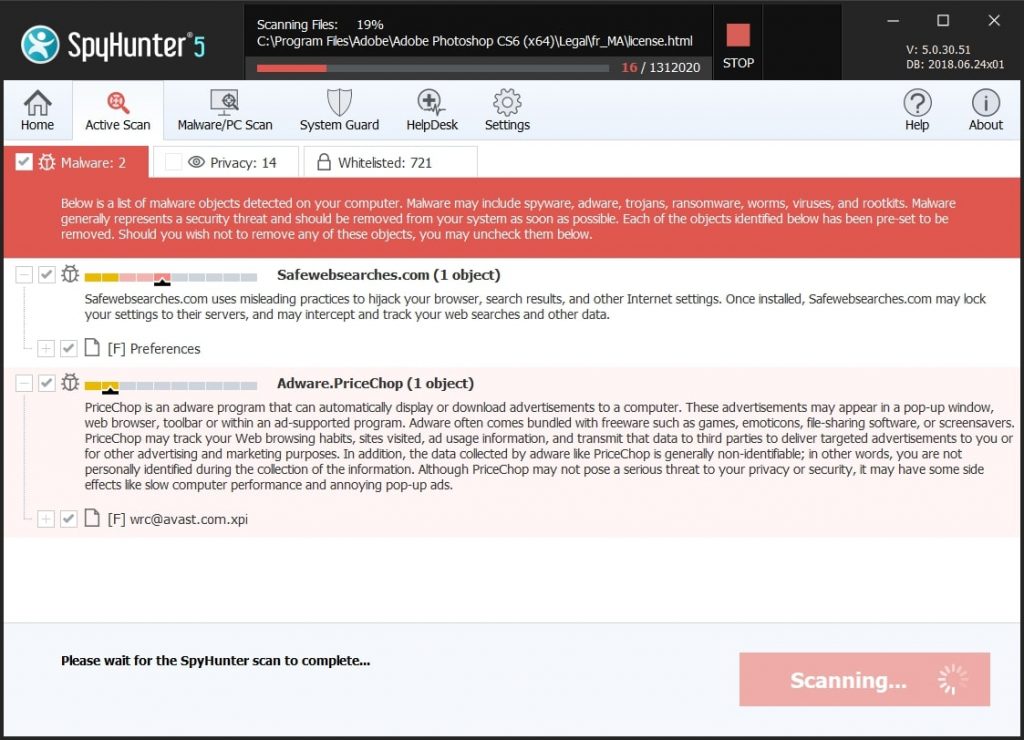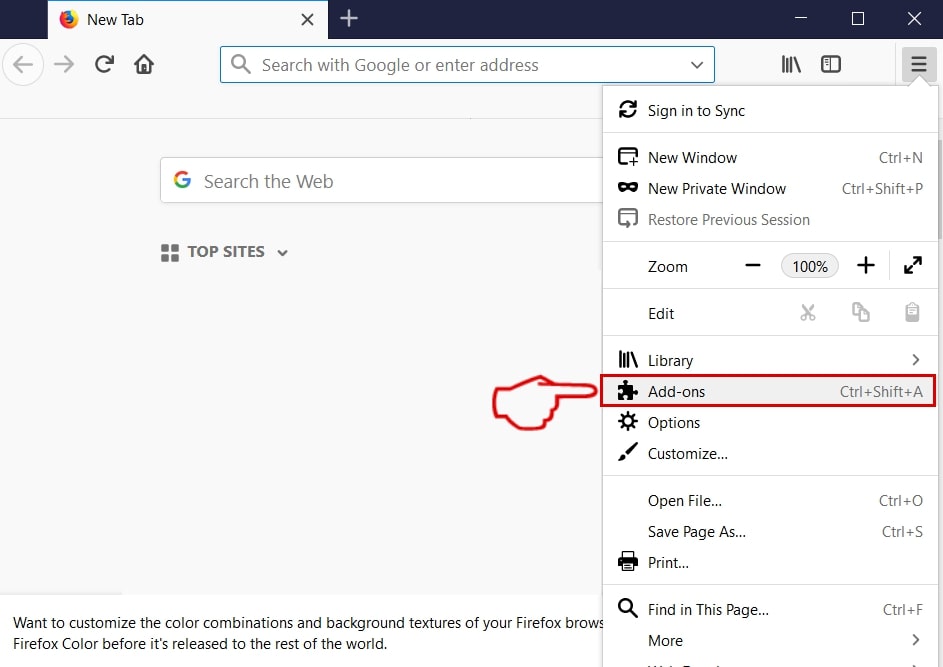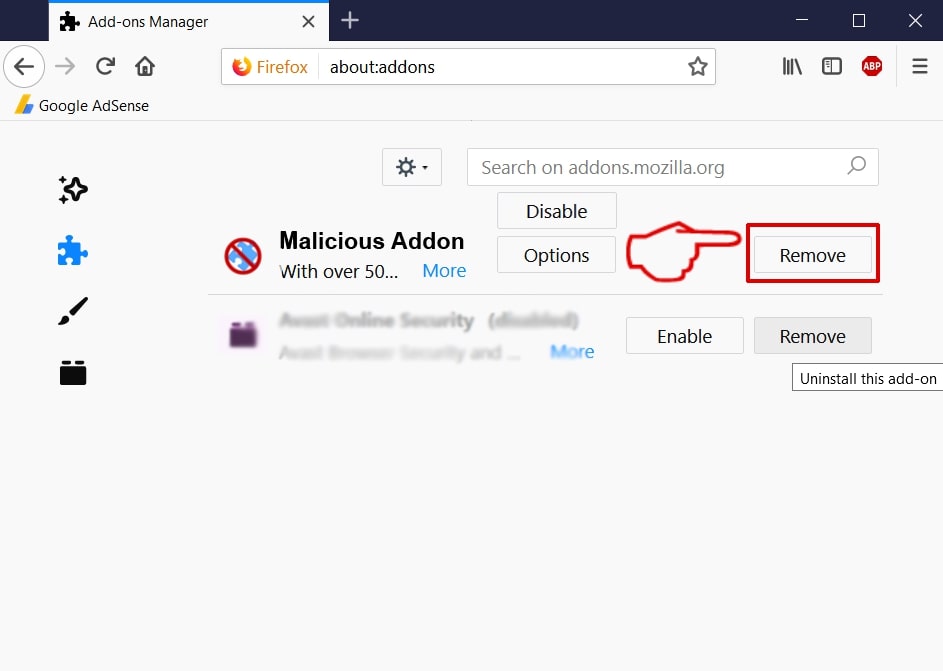SIDENOTE: This post was originally published in August 2018. But we gave it an update in August 2019.
This article reveals details on “Potential threats detected” scam as well as detailed guide for its complete removal from affected browser and system.
“Potential threats detected” scam alert aims to mislead you that your Mac was infected by severe malware threats that endanger personal and banking information. The purpose of this message is to trick you into downloading rogue security tool that could additionally damage your system. As of the reason why this scam appears in your preferred browser and even out of it, it is likely to be a potentially unwanted program installed on the device.
Threat Summary
| Name | Potential threats detected |
| Type | Scam for Mac |
| Short Description | A pop-up named “Potential threats detected” appears on screen to warn you about security issues that endagner your personal and financial information. With this the scam aims to promote rogue security tool. |
| Symptoms | Browsing sessions may be interrupted by the appearane on the scam. Browser and system slowdowns may occur due to increased number of ads. |
| Distribution Method | Freeware Packages; Software Bundles; Corrupted Web Pages |
| Detection Tool |
See If Your System Has Been Affected by malware
SpyHunter
Malware Removal Tool
|
User Experience | Join Our Forum to Discuss Potential threats detected. |
“Potential threats detected” Mac Scam – How Did I Get It
It is likely that a potentially unwanted program installed on the device causes “Potential threats detected” scam to appear in your browser and even out of it. Such type of program could have landed on your system by being distributed via freeware package or software bundle. There are many online stores for apps, forums, and hacker-controlled websites that offer free third-party apps which in turn hide the installation code of undesired apps inside their installers. Unfortunately, such apps are usually designed in a way that conceals the presence of any extras so you are more likely to get tricked into installing them along with a desired app. In order to prevent side effects of this kind, you should always select the Advanced/Custom configuration option as it could be set to inform you about any other additional apps that are set to install by default.
“Potential threats detected” Mac Scam – More Information
Once infection files and objects associated with the “Potential threats detected” Mac scam are executed on the system, they plague essential settings in order to start pushing it on the affected device.
The scam alerts Mac OS X users of severe malware that engender personal and banking information. By claiming that the system is heavily damaged it aims to trick you into downloading a security tool that could fix the issues. In fact, the offered tool is rogue and it is likely that once installed it will cause additional harm to your device instead of fixing it, as stated in the scam message.
By displaying the names of different Trojans, adware, spyware and other cyber threats, the scam aims to provoke a sense of urgency and convince you to click the “Free Scan Now” button. And here is the full message presented by “Potential threats detected” scam:
Potential threats detected!
WARNING!
Your Mac is heavily damaged (35,27%). Personal and banking information is at risk.
List of potential threats: Important!
[Name] [Type] [Threat level] To avoid more damage click on ‘San now’ immediately. Our deep scan will provide help immediately!. Update your PC and eliminate potential threats.
Free Scan Now ->

Furthermore, as long as the PUP associated with this scam is running on your Mac it is able to interrupt browsing sessions by displaying other annoying and potentially harmful ads. These ads, in turn, are likely to slow down your system and make the affected browser sluggish.
Remove “Potential threats detected” Scam from Mac
In order to remove “Potential threats detected” scam and all associated files from your PC make sure to complete all the steps listed in the removal that follows. It presents both manual and automatic removal instructions that combined will help you to remove this undesired program in full. The automatic approach guarantees maximum efficiency as a scan with an advanced anti-malware tool reveals the exact location of all harmful files and objects created by the PUP. The results enable you to access and remove all harmful files from the infected PC. Have in mind that files associated with this hijacker may be detected with different names than “Potential threats detected”.
In case that you have further questions or need additional help, don’t hesitate to leave a comment or contact us via email.
Steps to Prepare Before Removal:
Before starting to follow the steps below, be advised that you should first do the following preparations:
- Backup your files in case the worst happens.
- Make sure to have a device with these instructions on standy.
- Arm yourself with patience.
- 1. Scan for Mac Malware
- 2. Uninstall Risky Apps
- 3. Clean Your Browsers
Step 1: Scan for and remove Potential threats detected files from your Mac
When you are facing problems on your Mac as a result of unwanted scripts and programs such as Potential threats detected, the recommended way of eliminating the threat is by using an anti-malware program. SpyHunter for Mac offers advanced security features along with other modules that will improve your Mac’s security and protect it in the future.

Quick and Easy Mac Malware Video Removal Guide
Bonus Step: How to Make Your Mac Run Faster?
Mac machines maintain probably the fastest operating system out there. Still, Macs do become slow and sluggish sometimes. The video guide below examines all of the possible problems that may lead to your Mac being slower than usual as well as all of the steps that can help you to speed up your Mac.
Step 2: Uninstall Potential threats detected and remove related files and objects
1. Hit the ⇧+⌘+U keys to open Utilities. Another way is to click on “Go” and then click “Utilities”, like the image below shows:

2. Find Activity Monitor and double-click it:

3. In the Activity Monitor look for any suspicious processes, belonging or related to Potential threats detected:


4. Click on the "Go" button again, but this time select Applications. Another way is with the ⇧+⌘+A buttons.
5. In the Applications menu, look for any suspicious app or an app with a name, similar or identical to Potential threats detected. If you find it, right-click on the app and select “Move to Trash”.

6. Select Accounts, after which click on the Login Items preference. Your Mac will then show you a list of items that start automatically when you log in. Look for any suspicious apps identical or similar to Potential threats detected. Check the app you want to stop from running automatically and then select on the Minus (“-“) icon to hide it.
7. Remove any leftover files that might be related to this threat manually by following the sub-steps below:
- Go to Finder.
- In the search bar type the name of the app that you want to remove.
- Above the search bar change the two drop down menus to “System Files” and “Are Included” so that you can see all of the files associated with the application you want to remove. Bear in mind that some of the files may not be related to the app so be very careful which files you delete.
- If all of the files are related, hold the ⌘+A buttons to select them and then drive them to “Trash”.
In case you cannot remove Potential threats detected via Step 1 above:
In case you cannot find the virus files and objects in your Applications or other places we have shown above, you can manually look for them in the Libraries of your Mac. But before doing this, please read the disclaimer below:
1. Click on "Go" and Then "Go to Folder" as shown underneath:

2. Type in "/Library/LauchAgents/" and click Ok:

3. Delete all of the virus files that have similar or the same name as Potential threats detected. If you believe there is no such file, do not delete anything.

You can repeat the same procedure with the following other Library directories:
→ ~/Library/LaunchAgents
/Library/LaunchDaemons
Tip: ~ is there on purpose, because it leads to more LaunchAgents.
Step 3: Remove Potential threats detected – related extensions from Safari / Chrome / Firefox









Potential threats detected-FAQ
What is Potential threats detected on your Mac?
The Potential threats detected threat is probably a potentially unwanted app. There is also a chance it could be related to Mac malware. If so, such apps tend to slow your Mac down significantly and display advertisements. They could also use cookies and other trackers to obtain browsing information from the installed web browsers on your Mac.
Can Macs Get Viruses?
Yes. As much as any other device, Apple computers do get malware. Apple devices may not be a frequent target by malware authors, but rest assured that almost all of the Apple devices can become infected with a threat.
What Types of Mac Threats Are There?
According to most malware researchers and cyber-security experts, the types of threats that can currently infect your Mac can be rogue antivirus programs, adware or hijackers (PUPs), Trojan horses, ransomware and crypto-miner malware.
What To Do If I Have a Mac Virus, Like Potential threats detected?
Do not panic! You can easily get rid of most Mac threats by firstly isolating them and then removing them. One recommended way to do that is by using a reputable malware removal software that can take care of the removal automatically for you.
There are many Mac anti-malware apps out there that you can choose from. SpyHunter for Mac is one of the reccomended Mac anti-malware apps, that can scan for free and detect any viruses. This saves time for manual removal that you would otherwise have to do.
How to Secure My Data from Potential threats detected?
With few simple actions. First and foremost, it is imperative that you follow these steps:
Step 1: Find a safe computer and connect it to another network, not the one that your Mac was infected in.
Step 2: Change all of your passwords, starting from your e-mail passwords.
Step 3: Enable two-factor authentication for protection of your important accounts.
Step 4: Call your bank to change your credit card details (secret code, etc.) if you have saved your credit card for online shopping or have done online activiites with your card.
Step 5: Make sure to call your ISP (Internet provider or carrier) and ask them to change your IP address.
Step 6: Change your Wi-Fi password.
Step 7: (Optional): Make sure to scan all of the devices connected to your network for viruses and repeat these steps for them if they are affected.
Step 8: Install anti-malware software with real-time protection on every device you have.
Step 9: Try not to download software from sites you know nothing about and stay away from low-reputation websites in general.
If you follow these reccomendations, your network and Apple devices will become significantly more safe against any threats or information invasive software and be virus free and protected in the future too.
More tips you can find on our MacOS Virus section, where you can also ask any questions and comment about your Mac problems.
About the Potential threats detected Research
The content we publish on SensorsTechForum.com, this Potential threats detected how-to removal guide included, is the outcome of extensive research, hard work and our team’s devotion to help you remove the specific macOS issue.
How did we conduct the research on Potential threats detected?
Please note that our research is based on an independent investigation. We are in contact with independent security researchers, thanks to which we receive daily updates on the latest malware definitions, including the various types of Mac threats, especially adware and potentially unwanted apps (PUAs).
Furthermore, the research behind the Potential threats detected threat is backed with VirusTotal.
To better understand the threat posed by Mac malware, please refer to the following articles which provide knowledgeable details.



